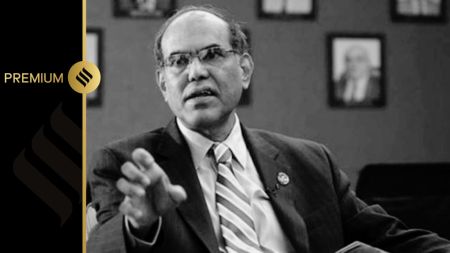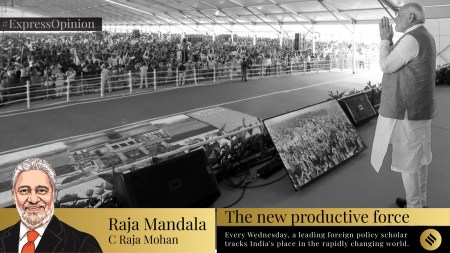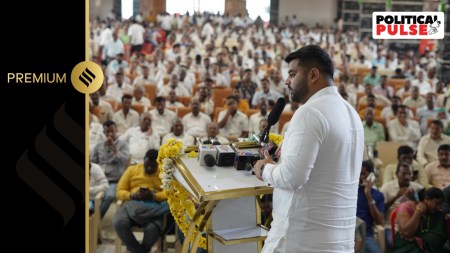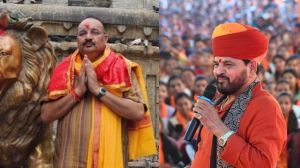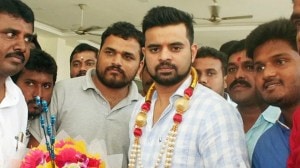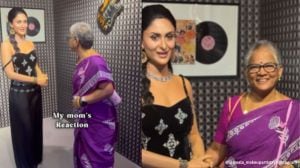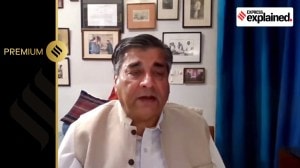- India
- International
A lesson from Madurai about the true heart of Hinduism
Menaka Guruswamy writes: It lies in the easy confidence of the many ways of faith within
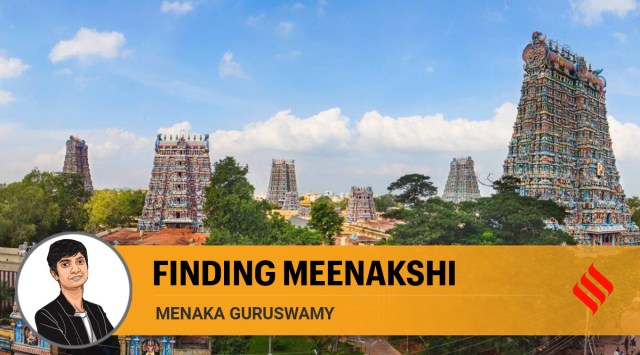 The Meenakshi Sundareswarar temple in Madurai. (File Photo)
The Meenakshi Sundareswarar temple in Madurai. (File Photo) Over the recently concluded Holi holidays, the better half and I went on a much-awaited trip to the grand old city of Madurai in Tamil Nadu. We were celebrating a decade of our relationship. We prepared by reading up on Madurai and learnt that it is one of India’s oldest continuously populated cities. There are historical records of Megasthanes, the ancient Greek historian and diplomat, visiting the city in the 3rd century BC.
Today, Madurai, which is bounded by three hills, is a bustling city of 1.7 million inhabitants and fueled by multiple industries. However, amid a modern Madurai lies an older world of heritage and enduring faith. To be in Madurai is to have all of one’s senses engaged and transported. For your mind, it has a fine museum dedicated to Mohandas Karamchand Gandhi (which also houses the clothes that he was wearing on the day he was assassinated) and a functioning library of the Theosophical Society.
For your palate, Madurai has what journalist Samar Halarnkar calls “a vibrant 24-hour foodie culture” — that defines the city called “thoonganagaram” or the city that never sleeps. The guidebook Lonely Planet notes that over 30 per cent of the people of the city report trouble sleeping. For your heart, Madurai makes you appreciate the many ways of faith or a multiplicity of ways within Hinduism. Here is an old world of meat-eating that is intertwined with devotion to a fierce goddess, Meenakshi — 97.8 per cent of Tamil Nadu is reported to be meat-eating. Finally, to completely mesmerise and captivate your entire being, by its magnificent architecture and intricate sculptures that tell stories from mythology, the Meenakshi Amman temple.
Nothing really prepares you for the Meenakshi Amman temple, located on the banks of the Vaigai river. Meenakshi (which means fish-eyed) in her form as Parvati, consort of Shiva, is the principal deity in the temple. The temple had its early origins in 600 CE and was subsequently restored and enhanced from the 16th century onwards by the Nayaka rulers, especially Tirumala Nayaka.
 The Meenakshi temple complex has 14 gopurams (gateway towers), four gates and multiple halls, with many resident deities including Shiva (Sundareswarar), Ganesha, Murugan, amongst others, all revolving around Meenakshi. The roof is painted with colourful art. Every evening Sundareswarar is carried to Meenakshi’s silver chamber in a procession before being returned to his own chamber the next morning. Each gopuram is a tapestry of sculpture, telling elaborate stories — much like a beautifully-engraved, colourful, three-dimensional graphic novel that communicates across eras.
The Meenakshi temple complex has 14 gopurams (gateway towers), four gates and multiple halls, with many resident deities including Shiva (Sundareswarar), Ganesha, Murugan, amongst others, all revolving around Meenakshi. The roof is painted with colourful art. Every evening Sundareswarar is carried to Meenakshi’s silver chamber in a procession before being returned to his own chamber the next morning. Each gopuram is a tapestry of sculpture, telling elaborate stories — much like a beautifully-engraved, colourful, three-dimensional graphic novel that communicates across eras.

However, it is the Hall of a Thousand Pillars, which is also a museum within the temple complex, that is the finest showcase of sculpture and art. The wonder within the wonder. Each stone pillar or column in the hall has intricately-carved sculptures of either fierce warriors or the mythical Yali (part lion, part elephant, part horse). At the base of each pillar are further small sculptures of human forms. Pillar after pillar of stone magnificence, all intended to awe the observer. Nataraja is the deity in the Hall, and hence it’s the first museum I have been to where prayers are offered.
One must deposit phones and shoes before entering the temple. So, we were entirely cut off from our humdrum contemporary life and could feel the cool stone flooring of the temple against our feet. We have no photos inside the temple. It resides as an enduring memory that one can revisit quietly, as one waits for cases in court or drinks tea after a long day’s work, or when one wakes up in the morning. Meenakshi provides tranquility as she becomes a part of one’s consciousness. Navtej Singh Johar, the Bharatanatyam dancer and yoga practitioner, said, “If you look closely, you will see that all the sculptures in the temple showcase movement, but Meenakshi herself is completely still”.
Right through our trip, we had the benefit of the insights of Viswa Darini, an architect who lives in Madurai. She is an insider-connoisseur of her beloved city, and much to our great relief provided us with a detailed and heartfelt itinerary. Viswa explained that “Madurai’s core city is planned around the temple in concentric streets”. She had instructions for our activities within and outside the temple: “For Meenakshi Ammal Kovil enter via the East Tower and exit via the West. She would add, “eat at Laala Halwa Kadai, a 100-year-old shop, serving hot halwa in lotus leaves”. Or “make sure to have breakfast at Murugan idlis, where the softness of the idlis is like jasmine”.
Viswa sent us for lunch at Amsavalli Bhavan, telling us to “start with kola urundai (mutton/chicken minced into balls and fried), muttai poriyal (South Indian scrambled eggs with green chillies and chopped onions) and vanjaram fry (a local fish, deep-fried, to be eaten with lime).” In Madurai, I tasted modifications of my grandmother’s recipe for ginger chicken and found my grandfather’s favorite mutton dishes. Chicken kari dosai, Madurai’s most popular dish, reminded me of the meat curries served with dosai at my grandmother’s table. Irrespective of what we ate for lunch, it was always followed by a “jigarthanda” — a dessert made from milk, agar agar, almond and ice cream. The perfect way to ward off the heat of the hot Madurai sun and round off a spicy meal.
As we caught the flight back to Delhi after a few days in Madurai, I thought back on what we had seen. Faith is multifaceted in India: Female or male deities, elaborate temples, or no fixed place of worship, vegetarian or non-vegetarian dietary practices. Madurai teaches us that in this easy confidence of many diverse faiths within a religion lies the true heart of Hinduism.
This column first appeared in the print edition on April 2, 2022 under the title ‘Finding Meenakshi’. The writer is a Senior Advocate of the Supreme Court.
40 Years Ago
EXPRESS OPINION
More Explained
May 02: Latest News
- 01
- 02
- 03
- 04
- 05


